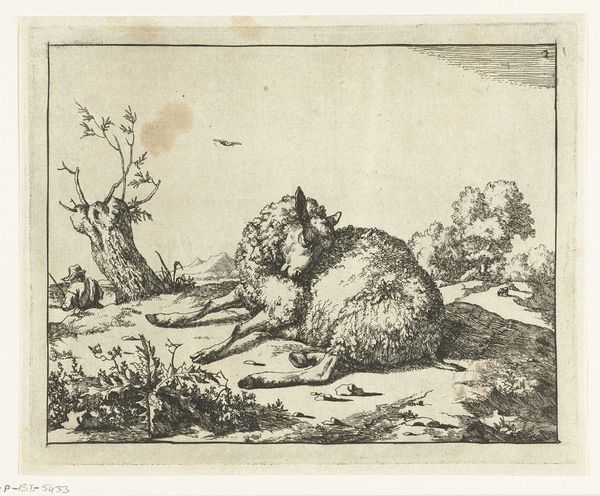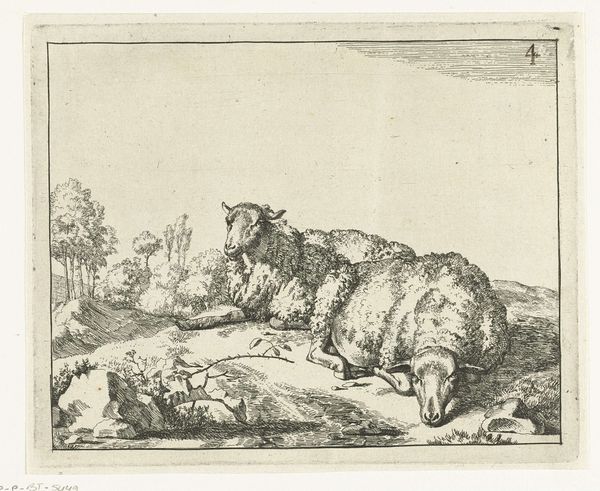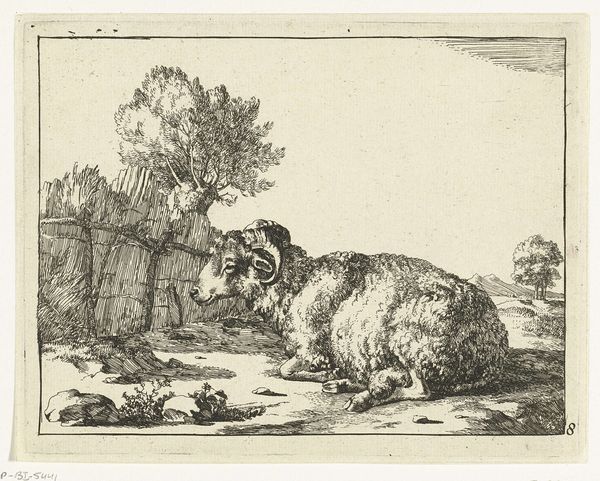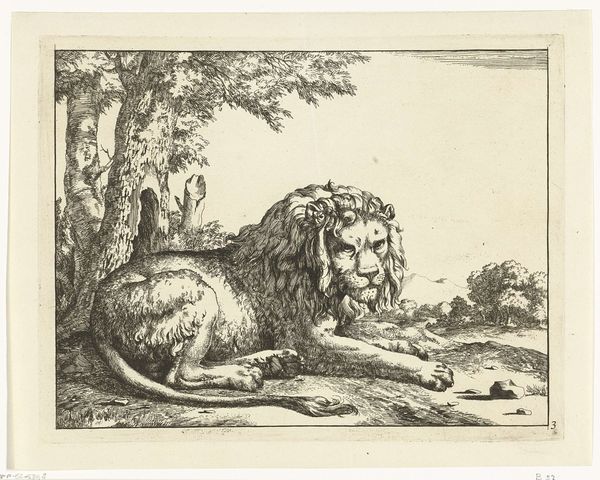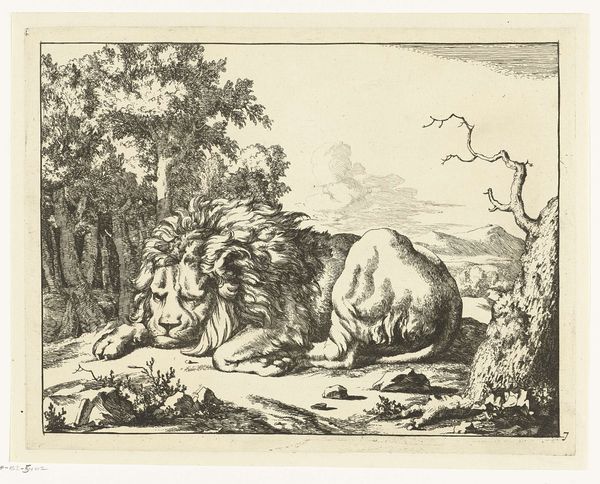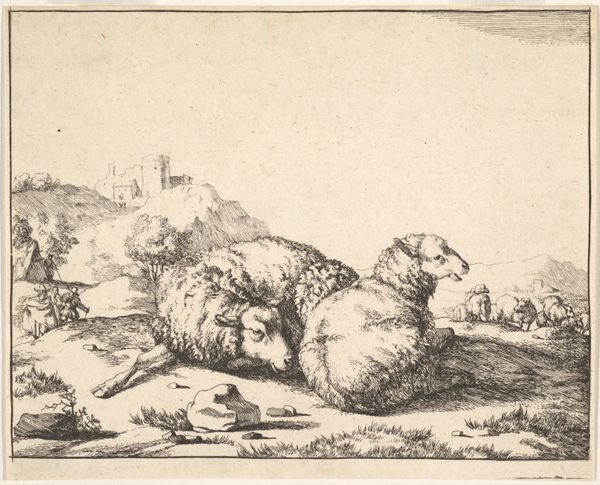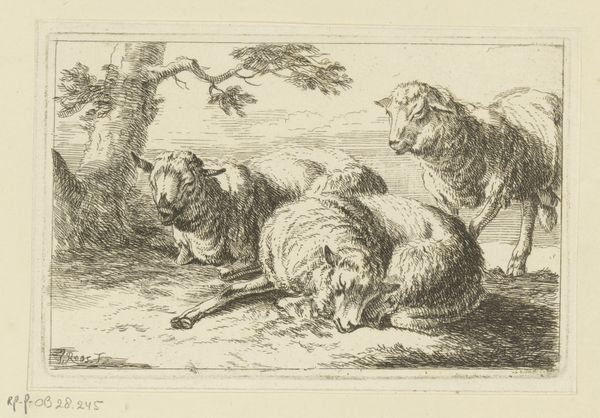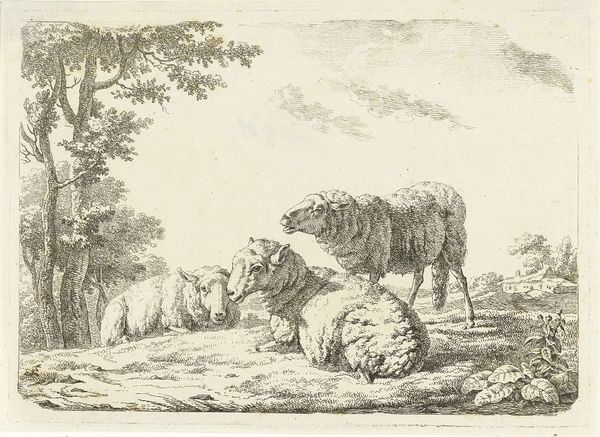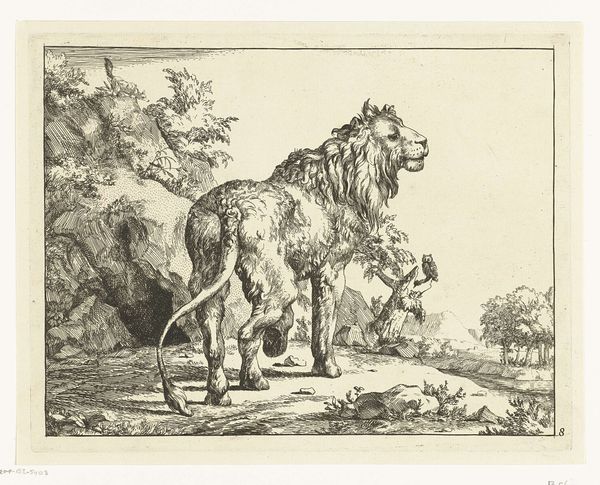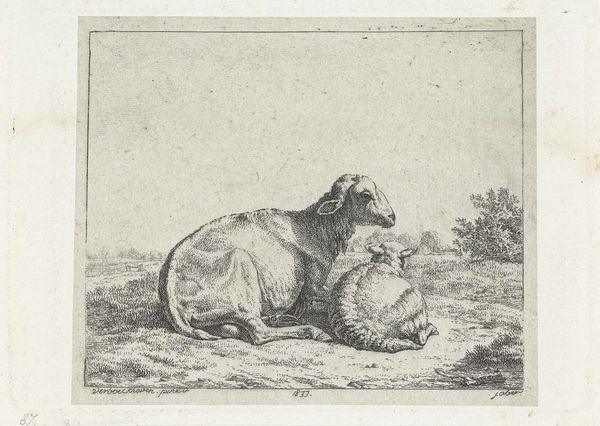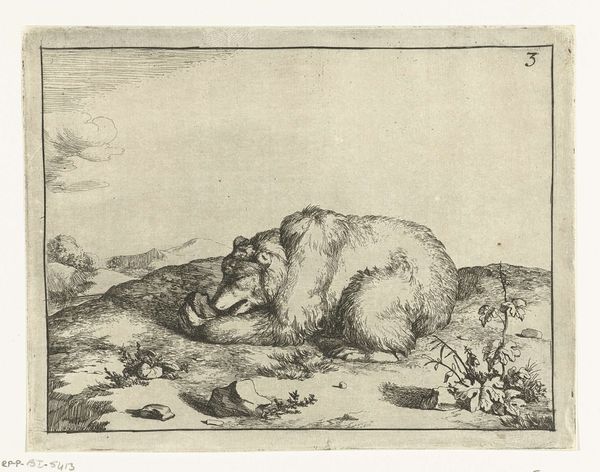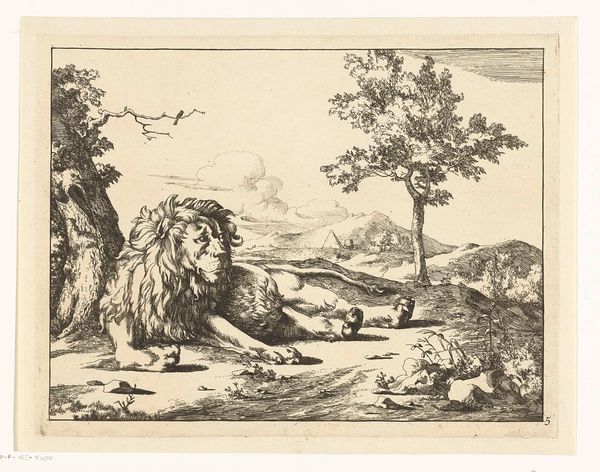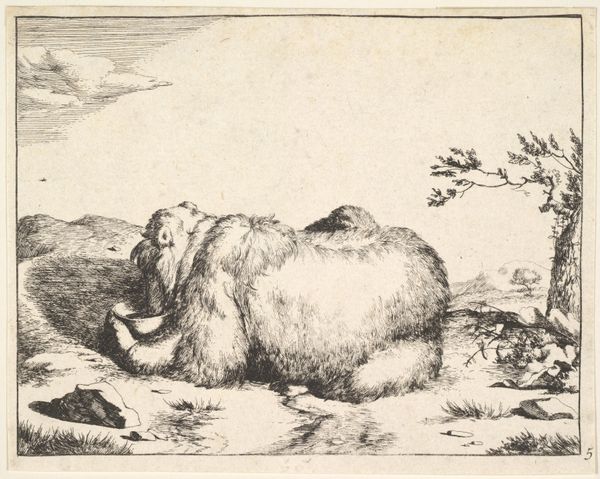
drawing, print
#
drawing
#
dutch-golden-age
# print
#
landscape
#
genre-painting
Dimensions: plate: 4 11/16 x 5 13/16 in. (11.9 x 14.8 cm) sheet: 5 x 6 1/8 in. (12.7 x 15.5 cm)
Copyright: Public Domain
Marcus de Bye made this print of sheep using etching, a printmaking process where acid is used to cut into a metal plate, back in the 17th century. The real skill here is the control of the etching process, something that would have taken de Bye years to master. Think about the range of marks that he’s made on the plate, from delicate thin lines to deeper, broader ones. Each of those would have required careful preparation of the plate, and different lengths of time immersed in the acid bath. He’s also used the technique to render a range of textures, contrasting the woolly fleece of the sheep with the smooth rocks. In de Bye’s time, the market for prints like this was booming. They were relatively cheap to produce, and as a result, were accessible to a wide range of buyers. This reminds us that the history of art has always been closely tied to the technologies of its production and circulation. This unassuming image speaks volumes about the art world of its day.
Comments
No comments
Be the first to comment and join the conversation on the ultimate creative platform.
